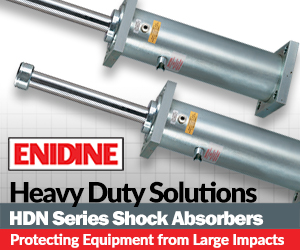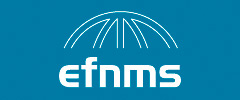How to Speed Up the Onboarding Process for New Maintenance Technicians
Are your maintenance responsibilities growing due to company expansion, or perhaps your senior tech is retiring soon? Sooner or later, every maintenance manager eventually has to hire new technicians.
Once hired, the new team members need to be made aware of how things are done in the company and taught the various procedures and processes within the company. The faster this can happen, the sooner these new members can become productive and start actually adding value to the organization.
In this article, we’ll discuss a few strategies you can use to speed up the process of onboarding new maintenance technicians.
The Mentor System
By pairing newly arrived technicians in the shift with an experienced colleague, you can not only help them learn the ropes faster, but also ease their transition into the company. This has been proven to be successful in organizations around the world and remains popular because it works.
The mentor is the new hire’s go-to person for understanding the company values, culture and their way of doing things. By ensuring that the new employee does not feel lost or overlooked, you set them up for success early on and reduce the chance of losing them to other companies.
When implementing the mentor system in your team, you should include a formally documented set of responsibilities for the mentor, as well as the topics that they should cover over the first few weeks or months. It should be interactive, allowing both the employees to exchange tips and knowledge, as the new employee may also have ideas and techniques that are useful.
The new employee can also give their feedback on how their onboarding process is going.
Done right, this system can greatly speed up how quickly a new employee gets to the point where they can work without a special supervision.
Well Defined Practices
For any maintenance department, it is essential to have clearly defined maintenance procedures and Standard Operating Procedures . Having the processes documented allows everyone in the team to know who is a part of the processes, what their roles are, and how the various tasks and steps in the process fit together.
Take a look at your current maintenance operating manual and any training material that you have. If it’s good enough for a newcomer to learn the ropes, then you can carry on. However, if the SOPs are outdated (due to a new way of doing things or because the industry practices have changed since the last version), you will need to revise the documentation and make sure it is can be understood by a layman.
For the newcomer, learning how things should be done becomes a piece of cake when the right set of rules and boundaries are clearly defined. Additionally, the new team members will learn the level of quality and performance expected of them.
Having a Simple to use Maintenance Software
The software that your company uses for maintenance, whether it is developed in-house, or an off-the-shelf product, can be central to your company’s operations. Over time, it becomes a repository of not just maintenance data, but can be molded to reflect the business processes.
Since your team members will be using this software on a daily basis, it is essential that they learn how to use it properly.
If you’re using a CMMS, ensure that it is intuitive, user-friendly and simple to use, so that your new technicians will have an easier time learning it. You don’t want to end up in a situation where your new technicians spend more time logging their work or finding asset information than they are doing actual maintenance work.
Good maintenance software should follow industry standard terminology, have an easy to use User Interface, a few helpful tutorials, and fast and flexible customer support. That is why it is worth to take your time to find a system that is a good fit for your organization.
You can learn more about how to select the best maintenance software here .
On Job training
One of the most effective methods to bring a new tech up to speed is to offer them on-the-job training. This not only makes them more productive faster, they also feel more valued, and remain engaged with the company.
The training can either be provided by professional third-party trainers or by an experienced member of your maintenance team. This can also be a good time to assess your team’s learning needs and update the training curriculum as required.
In the world of industrial construction and maintenance, the new technology of Augmented Reality is helping to upskill and retrain employees in new technologies quickly and effectively. By utilizing AR training tools, employees have to spend less time in recalling instructions and to get live guidance from software, allowing them to learn in an interesting and engaging way. Augmented Reality training is proven to make trainees more efficient and accurate at their work, leading to improved outcomes in the company’s product quality and more cost savings.
Conclusion
To stay competitive in the current market, new maintenance technicians need to be brought up to speed and made productive as soon as possible. To ensure equipment is properly inspected and maintained, and failure rates are kept low, the new technicians need to understand the company policies and maintenance processes.
In order to foster a better learning environment and boost the pace of learning the ropes for your new maintenance techs, you can utilize the strategies outlined in this article, such as on the job training, having a simple to learn Maintenance Software, documenting well-defined processes and implementing a mentor system.
Bryan Christiansen is the founder and CEO at Limble CMMS. Limble is a modern, easy to use mobile CMMS software that takes the stress and chaos out of maintenance by helping managers organize, automate, and streamline their maintenance operations.





![EMR_AMS-Asset-Monitor-banner_300x600_MW[62]OCT EMR_AMS-Asset-Monitor-banner_300x600_MW[62]OCT](/var/ezwebin_site/storage/images/media/images/emr_ams-asset-monitor-banner_300x600_mw-62-oct/79406-1-eng-GB/EMR_AMS-Asset-Monitor-banner_300x600_MW-62-OCT.png)



